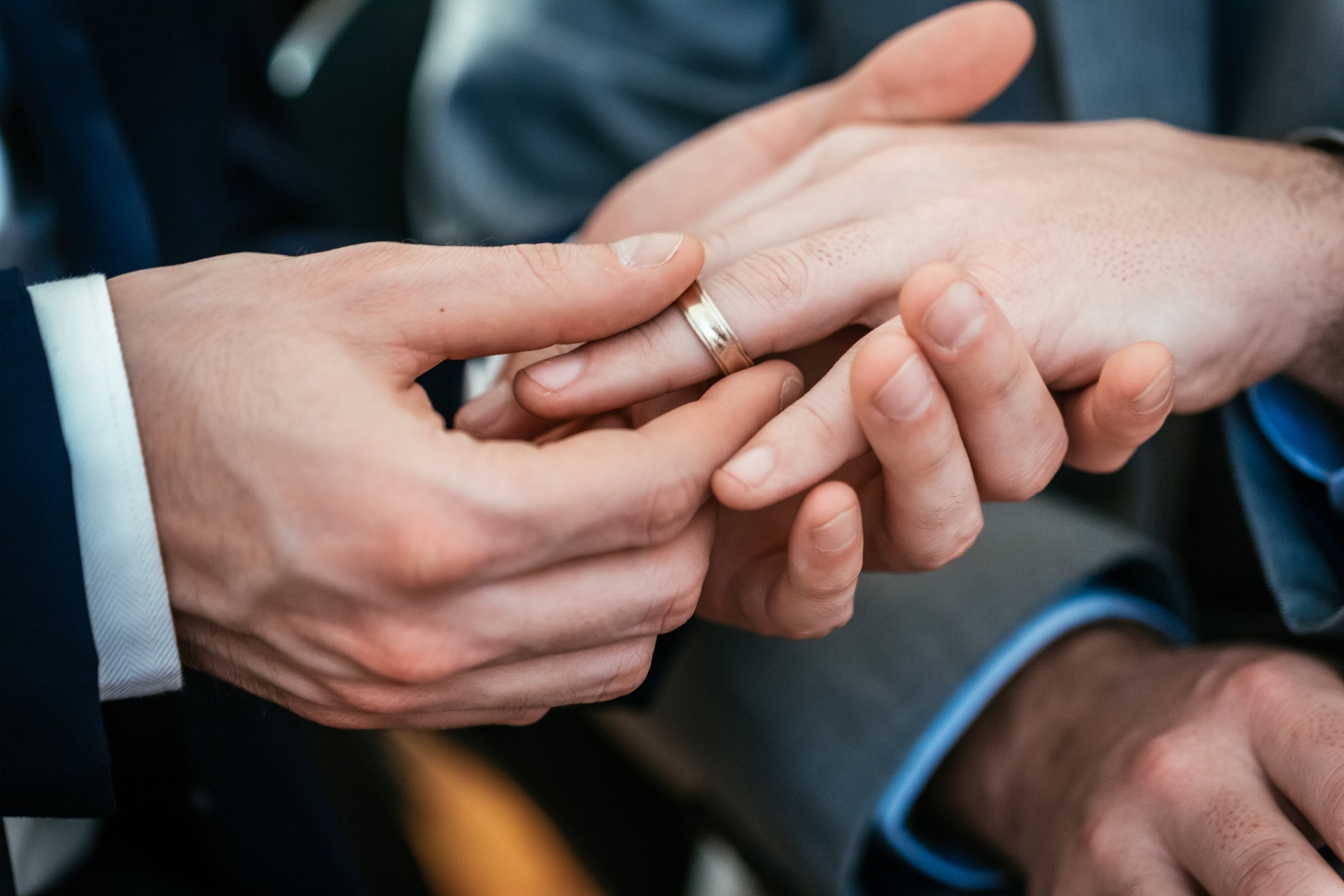
Same-sex marriage is now legal across the United States, but research on the reasons gays and lesbians get married is sparse. Now, in a recent study published in the journal Demography, a team of researchers looked at earnings and parenting patterns over time among married Swedish couples and found that registered partnership is important to both—but for different reasons.
The researchers looked at and followed Swedish couples who entered into registered partnerships sometime between 1995—the year Sweden approved registered partnerships of same-sex couples—through 2007. (They also analyzed data from 1994 to get a glimpse of life before official partnership.) The 1,381 couples in the study—672 lesbian and 709 gay couples—were entering their first unions and were between the ages of 20 and 64. The authors analyzed demographic data—including annual earnings from the couples, the differences between the earnings of people in the couple and the number of children in each union—for same-sex couples and compared the results to 267,264 heterosexual couples.
Sweden provides an intriguing opportunity to study how policy impacts same-sex marriages; though the country approved registered partnerships of same-sex couples in 1995, it wasn’t until a 2002 law that the country’s registered partners were allowed to jointly adopt children. (Swedish law dictates that married couples can only adopt jointly, thereby making it impossible for one partner to adopt without the other if the two partners are married.)
The authors found that gays and lesbians got married for very different reasons. Most gay couples entered their union without kids, and that number remained close to zero after marriage; the authors concluded that “the main function of registered partnership for gays is resource pooling,” they write in the paper. “For lesbians, on the other hand, the right to joint or step-parent adoption allowed in 2002 raised fertility and possibly entry into partnership.”
In other words, gay couples were more likely to get married to combine incomes and resources; lesbians tended to use marriage as a stepping stool towards creating a family, further emphasized by a spike in lesbians registering for marriage in 2002, the year when joint adoption was made legal.
The decision to have children is likely a large factor responsible for these differences, said Lena Edlund, an associate professor at Columbia University and one of the economists involved with the study. “I think the asymmetry results from a much greater difficulty male couples have in finding children that they can parent jointly,” she said in an e-mail. “It is also possible that male couples have a lower desire for joint children.”
For same-sex couples, adoption laws often lag behind marriage recognition laws—as they do in many states in the United States and did in Sweden. Having kids is especially expensive for gay mean, who need to find an egg and a gestational carrier—a problem lesbian couples don’t have.
Perhaps most intriguing is the role education plays in determining mates. In heterosexual marriages, assortative mating—choosing a partner more like oneself—is often at play, where partners are matched on an education level, according to economist Gary Becker’s A Theory of Marriage. A person with a master’s degree would partner with someone with at least a master’s degree; the theory states that it’s unlikely that this person would find common ground in parenting style and life philosophy with a person with a high school education.
What’s astonishing about the new research is that it showed that lesbian couples are often not as assortatively matched as heterosexual couples, or even gay men. For lesbians, an already thin marriage market means that education might not necessarily play a role in finding a mate so much as finding a partner who is equally as interested—or not—in raising children, Edlund said.
The concept of specialization also seems to play a lesser role in lesbian marriage compared to straight marriages. In a typical heterosexual marriage, the combination of having children and unequal pay means that partners are more likely to specialize, the study notes; the partner who earns less will stay at home with the kids, for example, while the partner who earns more acts as the breadwinner. In the Swedish sample, a higher percentage of lesbian couples remained on the labor force together and, in some instances, having their incomes nearly match after marriage.
The results of the study can only provide insight into the Swedish experience of same-sex parenting, which may differ from that in America, Edlund said. “American individuals and couples have greater access to fertility treatments and sperm banks,” she said. “There are also more American couples who can afford a surrogate mother.” Swedish couples, regardless of orientation, have access to healthcare and childcare options that the American couples don’t necessarily have, which would probably play into labor market options for partners, the study notes. But what can be said for sure is that, like any heterosexual marriage, marriage has consequences far more complex than simply signing a piece of paper.
More Must-Reads From TIME
- The 100 Most Influential People of 2024
- Coco Gauff Is Playing for Herself Now
- Scenes From Pro-Palestinian Encampments Across U.S. Universities
- 6 Compliments That Land Every Time
- If You're Dating Right Now , You're Brave: Column
- The AI That Could Heal a Divided Internet
- Fallout Is a Brilliant Model for the Future of Video Game Adaptations
- Want Weekly Recs on What to Watch, Read, and More? Sign Up for Worth Your Time
Write to Tanya Basu at tanya.basu@time.com